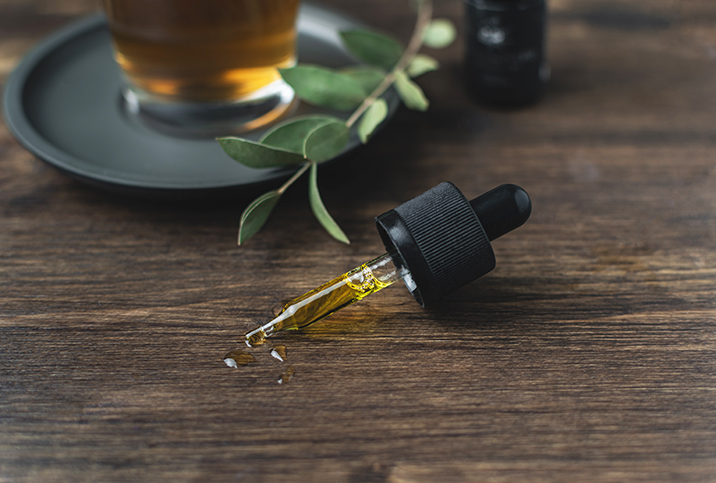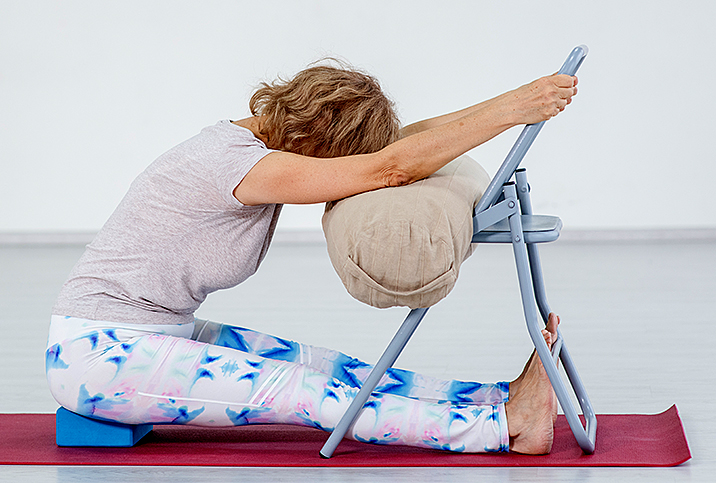My Perineum Is Killing Me

When is a pain in the butt not a pain in the butt? When it's perineum pain, of course.
The perineum is the part of the body between the anus and the genitals. It has a lot of connections to vital bodily functions and is affiliated with how some people enjoy sexual pleasure, so pain there needs to be addressed. All urologists see patients with perineal pain, but it's an area of expertise that can frustrate some of them.
"It's kind of the diagnosis of exclusion, and most of us hate it because many times you don't really know what's going on," said Hossein Sadeghi-Nejad, M.D., a professor of surgery and urology at Rutgers New Jersey Medical School and the chief of urology at the New Jersey Veterans Affairs Hospitals. "It's one of the most difficult diagnoses in urology, but there are people who really specialize in it, and when we have somebody with kind of unexplained, ongoing perineal or prostate pain, we send them to one of these guys."
According to Sadeghi-Nejad, experts with a variety of specialties are relied on when this type of pain remains an issue for patients.
"I will tell you, many of the patients that are referred to these experts end up seeing physiotherapists and people specializing in myofascial relaxation and all that, because it is very difficult often to tell whether their pain is infectious, whether it is stress-related, whether it is a manifestation of neuro disease somewhere else in the spine or whatnot," Sadeghi-Nejad said. "So it's a very, very complex sort of scenario."
Sources of perineal pain
"People sort of assume that perineal pain is due to conditions like prostatitis, a bacterial infection of the prostate, and indeed, yeah, that could be the case," said Robert Moldwin, M.D., a urologist with Northwell Health and the director of the Pelvic Pain Treatment Center at the Smith Institute for Urology in Lake Success, New York. "There could be inflammation, but in many instances, we're not actually finding infections."
People might think about the neighboring territories more than they think about their perineum, but Moldwin said the perineal area is a complicated base of operations for many essential bodily functions, including sexual function, defecation, urination and more.
The actual reasons people develop pain in the perineum are more diverse and complicated than simple prostatitis or some of the more commonly known conditions.
One of the most common forms of pain could be called neuromuscular pain, where the pain is either coming from the nerves, the muscles or both.
"The kinds of pathologies that you see there are usually, when one thinks about perineal pain, you think of some type of trauma," Moldwin said. "Was someone hurt down there—classic bicycle injuries, things like that. You can think of other causes like infection, whether it be a sexually transmitted disease or classical prostatitis, because the prostate is deep in the perineum itself."
Moldwin said one of the most common forms of pain could be called neuromuscular pain, where the pain is either coming from the nerves, the muscles or both. The perineum is full of both types of structures, which, of course, tend to also work in tandem.
Pelvic floor dysfunction is another major issue urologists see regularly, and that's across all gender lines. Like many conditions having to do with structures in that area, pelvic floor dysfunction can come with similar symptoms and consequences to conditions such as prostatitis.
Difficulties with urination, defecation and sexual function are all common traits of pelvic floor dysfunction, further mystifying the diagnosis process for some patients.
How to diagnose and treat perineal pain
Diagnosis and treatment of perineal pain can be difficult to pin down because of the numerous potential conditions associated with it, but also because of the ways our bodies function and react to pain in general. Treatments for perineal pain often have to work counterintuitively to the body's own instincts.
"Well, a lot of it comes down to trying to relax the muscles in that area," Moldwin said. "Our body's normal response to pain is a guarding maneuver, right? If you bang your elbow, you pull it in; if you stub your toe, you might even stick your other foot on top of it just to hold it in place. You're trying to protect yourself. When people have pain in the perineum, they tend to tighten the muscles up, when, in fact, they need to do exactly the opposite of what their body's telling them to do."
Doctors may recommend different methods to induce this relaxation, ranging from the quasi-decadent to the relatively invasive. The simplest is heat, which can be in the form of twice-daily warm baths or a heating pad.
Of course, pain isn't the only uncomfortable feeling that occurs in the perineal area. When mitigating additional symptoms arise, doctors may shift priorities.
"The other thing that we often will do is if there is some constipation present, we'll be very aggressive in terms of controlling the constipation, because often when the perineal pain is there, it can cause even more tightening; it's sort of a vicious cycle," Moldwin said. "The pain causes you to tighten up and then you start tightening up muscles that might be responsible for letting stool out, and then patients literally become constipated because of that. So we aggressively treat constipation, as well."
'When people have pain in the perineum, they tend to tighten the muscles up, when, in fact, they need to do exactly the opposite of what their body's telling them to do.'
Beyond managing pain and constipation daily, patients with consistent pain in the perineum may also want to incorporate a physical therapist into their treatment; not just any physical therapist, however: pelvic floor specialists.
"They often work internally," Moldwin said. "So they'll actually do a rectal exam on a patient, examine all of the musculatures, see where the tender point—what we often call trigger points—might be present. And they're going to try to soften those areas up and, hopefully, release some of that discomfort."
Pelvic floor specialists also perform external work, which may include stretches and exercises as homework for the patient.
Another occasional treatment consists of taking muscle relaxers orally or applying compounded muscle relaxers as suppositories to directly treat, in Moldwin's words, "where the action is." He said it's all about improving the experience for the patient by treating the body with localized, rather than systemic, focus.
New perineum practices
"The other thing that we've published on, and I know is done in a lot of groups around the world at this point, are something called trigger point injections directly into the muscles," Moldwin said. "Using a very skinny needle, we can apply anesthetics and sometimes even off-label Botox. Botox is not FDA-approved for this purpose, but in order to relax the muscles, sometimes that may be effective."
Moldwin said these injections can have a huge positive effect on the quality of life for people who receive them, though the Botox injections are a much less standard practice than the use of anesthetics.
For people with chronic deep pelvic or perineal pain, the fact that doctors continue to discover new methods of treatment is a positive sign, because many of the classic means of treating muscular pain don't apply to the perineum.
Moldwin compared treating injuries and symptoms in the perineal area to other parts of the body.
"The reason it's so difficult to treat these muscles—imagine you tear your deltoid, your shoulder or something like that," he said. "I can put you in a sling for that, and that works quite well with immobilizing it, and then we can work with giving people muscle relaxers, heat and all the different things I was talking about. But when you think about the pelvic floor muscles, these are muscles that you have to use every day…so we're trying to institute therapy on muscles that you can't stop using."
This is why it's important to acknowledge pain when it comes up and to alert your doctor. Even if the cause is outside the expertise of your primary care doctor or primary urologist (which may very well be the case when perineal pain is involved), they may be able to advise you on immediate steps to take to either alleviate the pain or get in touch with a specialist who might be better able to help.


















